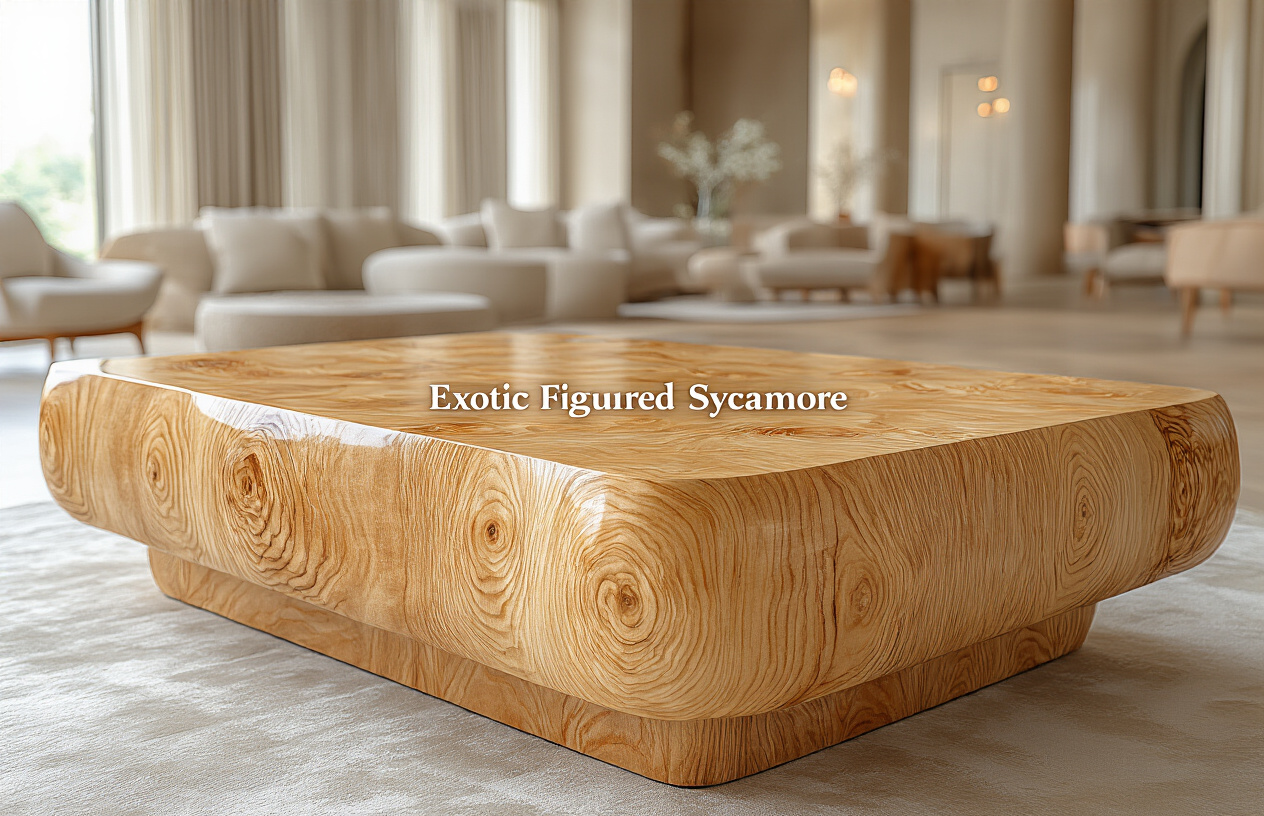Natural figured sycamore veneer offers stunning visual appeal with its distinctive grain patterns and light color palette. Perfect for woodworkers, interior designers, and DIY enthusiasts seeking premium finishing materials for their projects. In this guide, we’ll explore what makes figured sycamore unique among wood veneers and highlight popular applications that showcase its natural beauty. We’ll also cover selection tips to help you find the highest quality veneer sheets for your specific needs.
What Makes Natural Figured Sycamore Veneer Unique
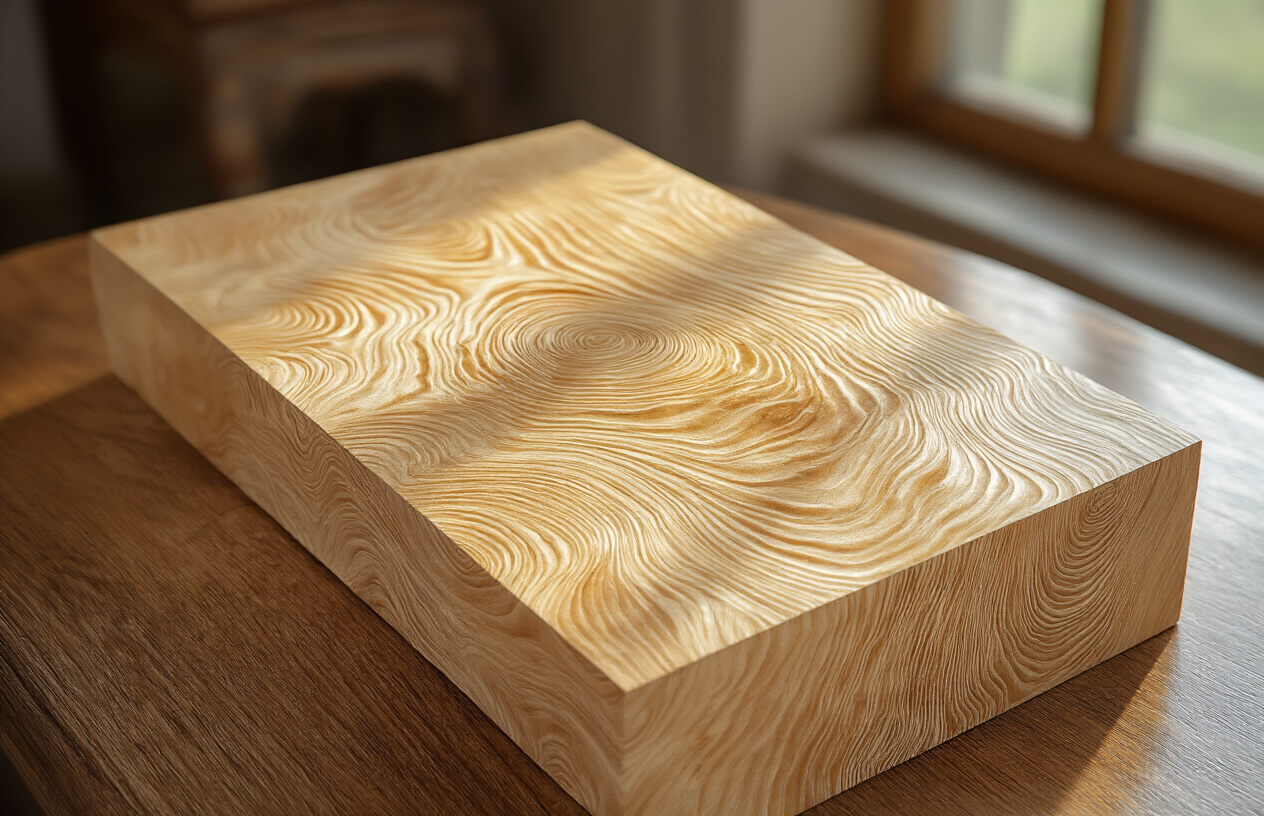
The Distinctive Grain Patterns That Set Sycamore Apart
Ever looked at sycamore veneer and thought, “Wow, that’s not like anything else”? You’re right. Sycamore veneer has this jaw-dropping ray fleck pattern that catches light in ways other woods simply can’t match.
The magic happens because of the medullary rays – these cellular structures that run from the center of the tree outward. In sycamore, they’re unusually wide and prominent. When the wood is quarter-sawn, these rays create that shimmering, almost 3D effect that designers go crazy for.
Unlike oak or maple, sycamore’s grain doesn’t just go in one direction. It dances. It zigzags. Sometimes it creates these little islands of figure that look like tiny landscapes when finished.
Understanding Figure Types in Sycamore Veneer
Sycamore offers several distinctive figure types:
- Ray Fleck: The classic sycamore look with those flashy, reflective patches
- Quilted: Wavy patterns that create a 3D, pillowy appearance
- Fiddleback: Tight, parallel ripples that resemble the back of a violin
- Curl: Gentle waves that create a subtle movement across the surface
The most prized? Quartersawn ray fleck with consistent pattern distribution. This stuff is gold to furniture makers because it creates that unmistakable sparkle when you walk around a piece.
How Natural Processing Enhances Visual Appeal
The secret to amazing figured sycamore isn’t just about finding the right tree. It’s how you cut it.
Quarter-sawing is key – cutting perpendicular to the growth rings maximizes those ray flecks. But timing matters too. Mills that know what they’re doing will tell you winter-harvested sycamore often yields the best figure because of reduced sap flow.
Slow, careful drying makes all the difference. Rush the process and those beautiful patterns can collapse or distort. The good stuff is air-dried first, then kiln-dried with a gentle touch.
No fancy chemicals or treatments needed here. The best sycamore veneer is all about highlighting what nature already created perfectly.
Color Variations and Their Impact on Design
Raw sycamore veneer ranges from creamy white to pale reddish-brown, with occasional streaks of darker heartwood that add character.
This neutral palette is why designers love it – it’s the perfect canvas. The light base color makes those ray flecks pop dramatically, especially when finished with oil or clear lacquer.
Some designers deliberately seek out sycamore with color variations. A cabinet with consistent figured pattern but subtle color shifts creates visual interest without overwhelming a space.
Others prefer steam-treated sycamore, which takes on a gorgeous honey tone while maintaining all that figure. This warms up contemporary spaces that might otherwise feel cold.
The subtle color shifts in natural sycamore also age beautifully, developing a rich patina over time – something that manufactured materials simply can’t replicate.
Key Benefits of Choosing Figured Sycamore Veneer
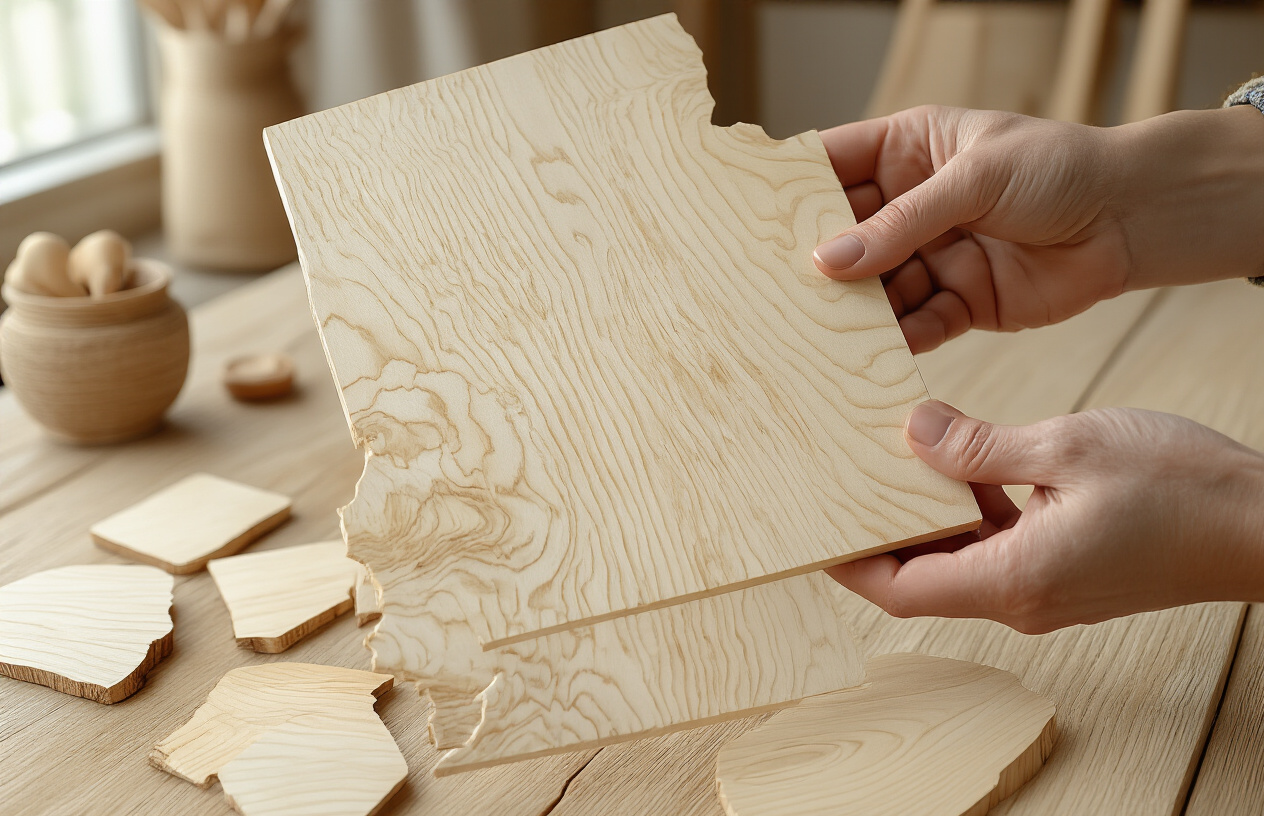
Exceptional Aesthetic Value for Premium Projects
Picture this: a client walks into your showroom and stops dead in their tracks. That’s the figured sycamore effect.
The undulating waves and rippling patterns catch light in ways other veneers simply can’t match. It’s not just wood – it’s nature’s artwork. High-end interior designers regularly choose figured sycamore for statement pieces because of its distinctive character.
What makes it truly special? The unpredictable figure patterns range from subtle ripples to dramatic quilted effects that create visual depth. Each sheet tells its own story – no two are identical. This exclusivity factor is why luxury yacht builders, boutique hotels, and custom furniture makers are willing to pay premium prices.
When bookmatched, figured sycamore creates mirror-image patterns that elevate ordinary furniture to conversation pieces. The creamy white to pale golden background provides the perfect canvas for these natural patterns to shine.
Durability and Performance Characteristics
Figured sycamore isn’t just a pretty face. This stuff holds up.
The wood maintains excellent dimensional stability when properly dried and finished. This means less warping, splitting, or checking over time compared to many other decorative veneers.
Sycamore’s tight, uniform grain structure accepts stains and finishes beautifully, allowing for versatile color applications while still showcasing its natural figure. The wood responds exceptionally well to hand-rubbed oil finishes that bring out its three-dimensional qualities.
While moderately hard, sycamore veneer is still workable with standard woodworking tools. It cuts cleanly without excessive splintering and can be sanded to a remarkably smooth surface. The veneer also bonds well with various substrates when using quality adhesives.
Sustainability Advantages of Sycamore Harvesting
Good news for eco-conscious designers – sycamore is actually a responsible choice.
American sycamore grows abundantly throughout the eastern United States with impressive regeneration rates. Unlike exotic species that face overharvesting concerns, domestic sycamore populations remain stable and well-managed.
The trees grow quickly, reaching harvestable size faster than many hardwoods. This rapid growth cycle means more sustainable production cycles and reduced environmental impact compared to slow-growing species.
Many sycamore veneer suppliers now participate in certified forestry programs that ensure responsible harvesting practices. By selecting figured sycamore from these sources, you’re supporting forest management that maintains wildlife habitats and protects watershed areas.
The manufacturing process for sycamore veneer is also relatively efficient. Modern slicing techniques maximize yield from each log, reducing waste and ensuring more usable material from each harvested tree.
Popular Applications for Natural Figured Sycamore
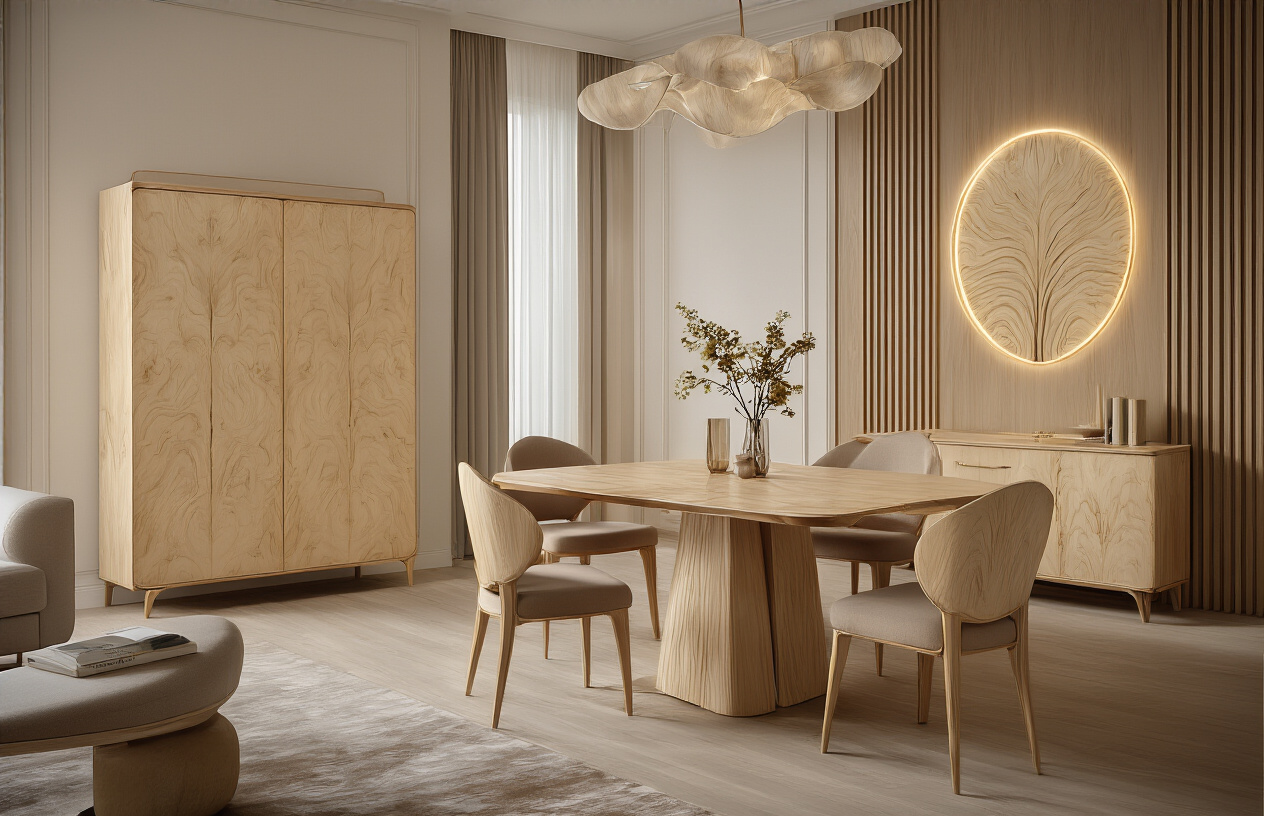
Luxury Furniture Design Possibilities
Natural figured sycamore veneer transforms ordinary furniture into conversation pieces. That stunning quilted or flamed pattern? It’s not just beautiful—it’s the star of the show in high-end tables, cabinets, and executive desks.
Designers love figured sycamore because it plays nicely with other materials. The light, creamy background with darker figuring creates perfect contrast against metal accents, glass surfaces, or darker wood borders.
What makes it really shine in furniture is how it catches light. As you walk around a sycamore-veneered piece, the figure seems to dance and shift—giving that unmistakable luxury feel that mass-produced furniture can’t touch.
Architectural Paneling and Wall Features
Walk into a high-end hotel lobby or executive office with sycamore panels and you’ll immediately feel it—that unmistakable warmth and sophistication.
Architects use natural figured sycamore veneer for:
- Feature walls that become focal points
- Curved paneling that showcases the veneer’s flexibility
- Elevator surrounds that elevate the entire space
- Office partitions that bring natural elegance
The beauty of sycamore in architectural applications? Its light color brightens spaces while still providing visual interest and texture that plain materials simply can’t deliver.
Musical Instrument Construction
Guitar makers don’t choose figured sycamore by accident. The wood’s acoustic properties and striking appearance make it a double threat in instrument building.
Sycamore (often marketed as “European maple” in the music world) appears in:
- Back and sides of acoustic guitars
- Violin and viola backs
- Piano interior veneers
- High-end drum shells
Musicians report that sycamore offers a bright, responsive tone with excellent projection—making it as functional as it is beautiful.
Fine Cabinetry and Millwork
Cabinet makers have long treasured figured sycamore for its workability and visual impact. The wood takes finishes beautifully, highlighting its natural figuring while allowing craftspeople to achieve anything from glossy contemporary looks to warm traditional finishes.
Kitchen designers particularly appreciate sycamore for statement pieces like islands or specialty cabinets. The wood’s natural resistance to warping makes it practical for these applications, while its distinctive appearance ensures one-of-a-kind results.
Yacht and Vehicle Interior Accents
Nothing says luxury quite like figured wood in transportation interiors. Sycamore veneer has become increasingly popular in:
- Yacht cabin paneling and bulkheads
- Private aircraft galleys and seating areas
- High-end automobile dashboards and door panels
- Custom RV and motorhome interiors
The relatively light weight of sycamore veneer makes it ideal for these applications, where every ounce matters. And unlike some darker veneers, sycamore creates brightness in often confined spaces while still delivering that unmistakable luxury aesthetic.
Selection Guide: Finding the Perfect Figured Sycamore Veneer
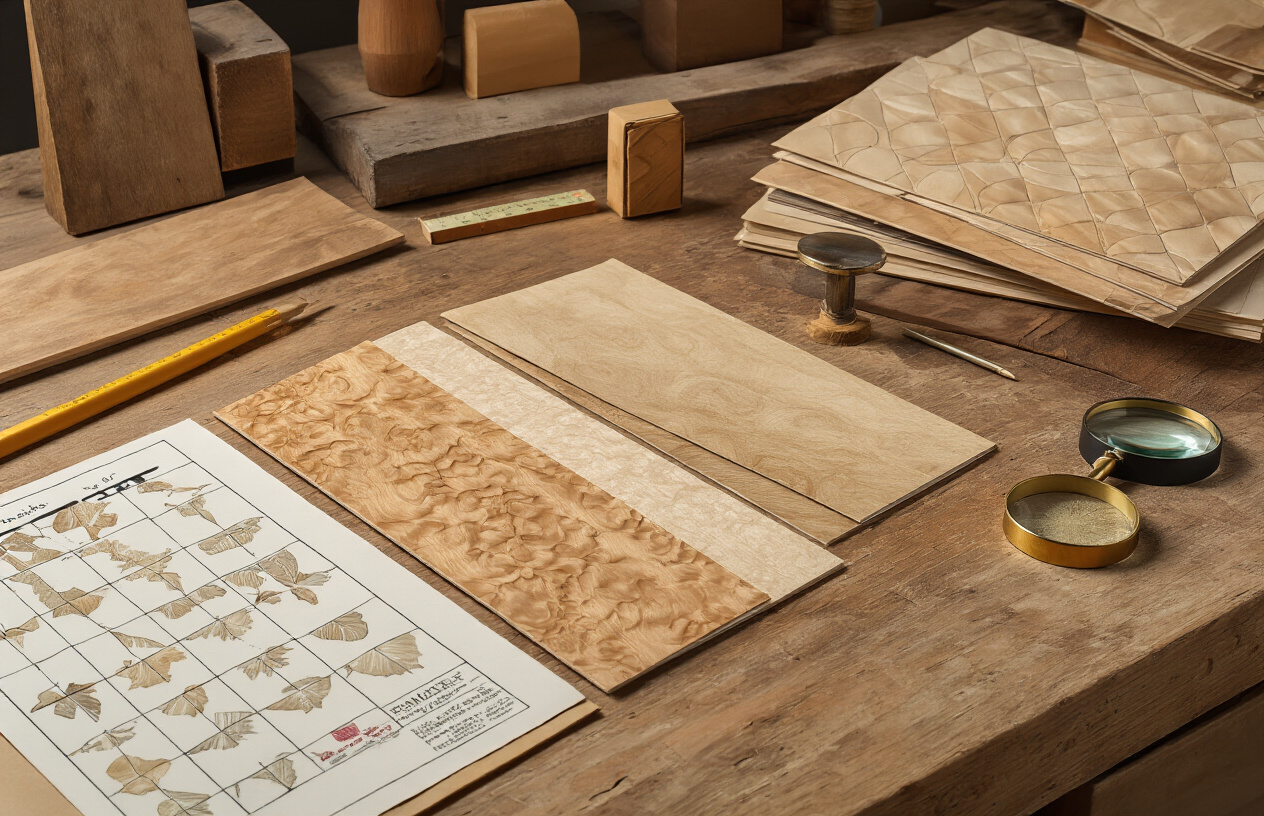
A. Grading Systems and Quality Indicators
Figured sycamore veneer isn’t created equal. The difference between mediocre and magnificent often comes down to grading.
Top-grade figured sycamore shows consistent, pronounced figuring throughout the entire sheet. The pattern flows naturally without interruptions or bland spots. Premium sheets display that eye-catching shimmer across 90% or more of the surface.
When examining potential sheets, look for:
- Color uniformity: High-quality figured sycamore maintains consistent coloration
- Figure intensity: The more dramatic the figure, the higher the grade
- Surface quality: Free from defects like knots, splits, or discoloration
Most suppliers use a simple A-D grading system:
| Grade | Characteristics |
|---|---|
| A/Premium | Exceptional figuring, minimal defects, consistent color |
| B/Select | Good figuring, minor imperfections, mostly uniform |
| C/Natural | Moderate figuring, some character marks, color variations |
| D/Utility | Minimal figuring, visible defects, significant color differences |
Trust your eyes and hands. The best sheets have a silky feel and catch light in ways that simply stop you in your tracks.
B. Matching Techniques for Seamless Results
The magic happens when multiple sheets come together in perfect harmony. You’ve got options here.
Book matching is the crowd favorite – flip adjacent sheets like opening a book, creating a mirror image where the figure points toward the center line. This technique creates that stunning symmetrical butterfly effect that makes people go “wow.”
Slip matching lines up sheets in sequence without flipping, maintaining the same direction of grain. Perfect when you want that continuous flow across a large surface.
For the ambitious, four-way matching creates a diamond pattern at the center point of four sheets. It’s challenging but delivers show-stopping results.
Mix techniques for larger projects. Maybe book match for the cabinet fronts, but slip match for the sides where continuity matters more than symmetry.
The key? Planning. Lay out your sheets before committing. Take photos. Live with the arrangement for a day. Your future self will thank you.
C. Cost Considerations and Value Assessment
Quality figured sycamore commands premium prices, but understanding what drives costs helps you make smart investments.
Figure intensity is the biggest price factor. Those sheets with dramatic, consistent figuring cost substantially more than those with subtle patterns. The difference can be 3-5 times higher per square foot.
Sheet size matters too. Larger, unbroken sheets cost more per square foot than smaller ones because they’re rarer and offer more design flexibility.
Beyond the upfront cost, consider these value factors:
Yield – Premium grades waste less material during matching
Finishing ease – Better grades typically require less prep work
Project longevity – Quality veneer creates heirloom-worthy pieces
A smart approach? Mix grades strategically. Use premium sheets for highly visible areas (cabinet fronts, tabletops) and lower grades for internal components or less visible surfaces.
Remember, veneer is a fraction of overall project cost but makes the biggest visual impact. Skimping here to save 5% on your total budget often leads to 50% less impressive results.
Working with Natural Figured Sycamore Veneer
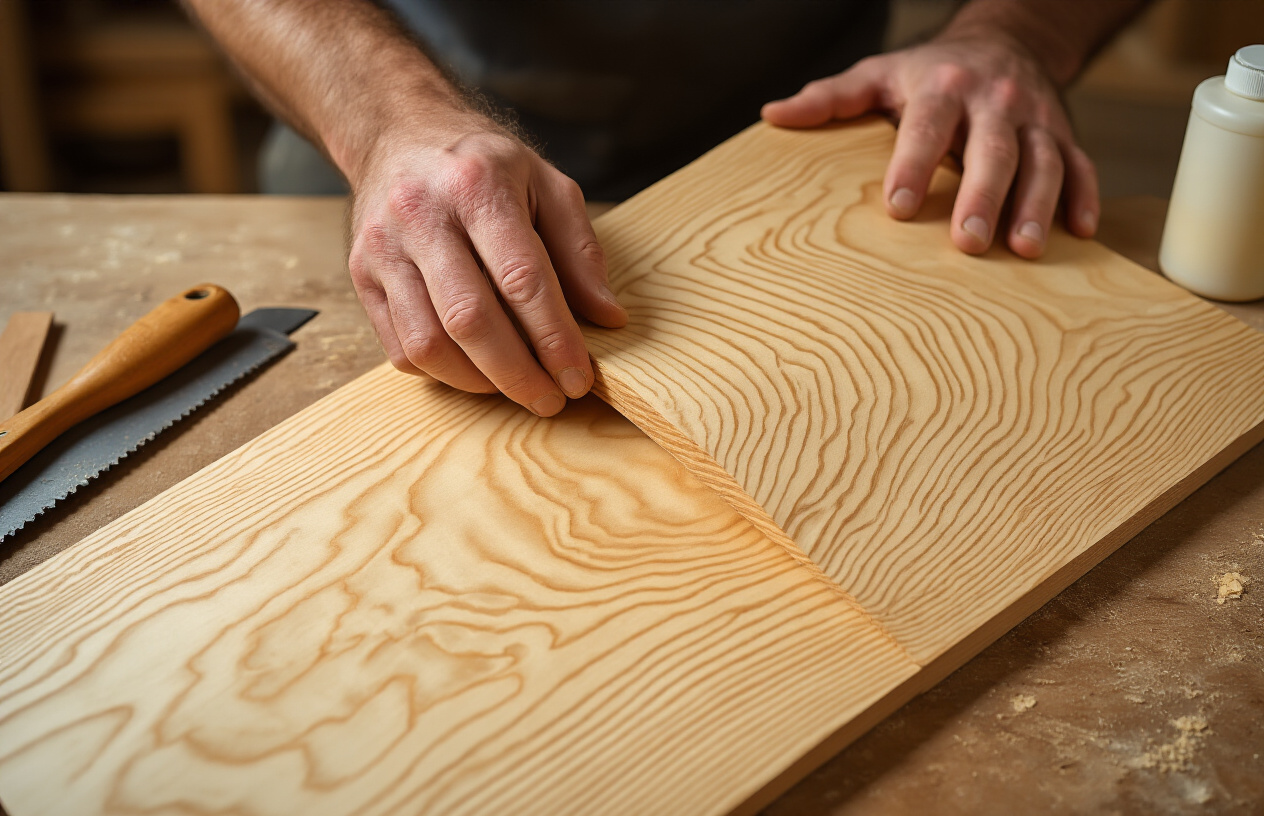
Preparation and Handling Best Practices
Working with figured sycamore veneer is like handling liquid gold—it requires patience and precision. Store your veneer sheets flat, never rolled, with a weighted board on top to prevent warping. Before installation, acclimate the veneer to your workspace for at least 72 hours.
When cutting, always use a sharp veneer saw or razor knife with a straightedge guide. Dull blades will tear those gorgeous figured patterns you paid premium for. For those tricky cuts around edges, score lightly first, then make your final cut.
Keep your hands clean and slightly moistened—dry hands catch on the delicate surface. And those fancy watches and rings? Take ’em off. One scratch ruins everything.
Recommended Adhesives and Application Methods
Skip the water-based adhesives—they’ll wrinkle your veneer faster than a cotton shirt in the rain. Contact cement works beautifully for smaller projects, while PVA glue is perfect for larger applications.
My go-to method:
- Apply adhesive evenly using a fine-toothed plastic spreader
- Wait until tacky (touch test: should stick slightly to knuckles)
- Position from center outward, using a veneer hammer to remove air bubbles
For curved surfaces, use vacuum pressing if available. No vacuum press? Try the “hammer veneering” technique with hide glue—old school but effective.
Finishing Techniques to Enhance Figure Patterns
The magic of figured sycamore happens at finishing time. Sand progressively (180-220-320 grit), always with the grain. Between sandings, wipe with a damp cloth to raise the grain, then sand again when dry.
Water-based finishes tend to mute the figure, so opt for oil-based products. A “pop the grain” technique works wonders:
- Apply shellac sanding sealer
- Follow with Danish oil (light, not dark)
- Finish with clear lacquer for depth and protection
For next-level figuring, try this insider trick: before finishing, mist the surface lightly with water, let dry completely, then sand with 400 grit—the figure will jump out dramatically.
Common Challenges and Expert Solutions
Veneer bubbling? Don’t panic. Make a tiny slit with a razor, inject adhesive using a syringe, then clamp overnight.
Dealing with edge lifting? Apply heat using an iron on low setting (no steam!) with parchment paper as a barrier, then press firmly.
Figured sycamore can sometimes show uneven color absorption. The fix? Pre-treat with a 1:1 mixture of denatured alcohol and shellac before your main finish.
Tear-out during sanding happens to everyone. The remedy isn’t more sanding—it’s dampening the area, letting the wood fibers swell, then re-sanding with a higher grit once dry.
Jointing seams visible? Next time, use the “bookmatching” technique, cutting consecutive sheets from the same flitch for seamless pattern flow.

Natural figured sycamore veneer stands out as a remarkable choice for discerning designers and craftspeople seeking distinctive wood elements. Its striking figuring, unique grain patterns, and versatility make it suitable for a wide range of applications from fine furniture to architectural panels. The selection process, focusing on color consistency, figure intensity, and sheet matching, ensures you achieve exactly the aesthetic vision you desire.
As you embark on your next project, consider the unmatched elegance that figured sycamore veneer brings to any space. With proper handling techniques and finishing methods, you’ll unlock the full potential of this exceptional material, creating enduring pieces that showcase nature’s artistry. Whether for commercial spaces or personal projects, natural figured sycamore veneer delivers that perfect balance of sophistication and natural beauty that truly stands the test of time.
